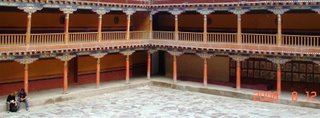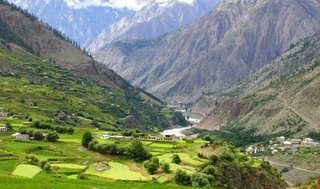

In Nubra valley, near Hunder one comes across Bactrian double humped camels who along with ponies were supposed to be the mainstay of caravans in these rugged terrains...a 'skeleton trail' route that would take one over many high altitude passes on the way from Amritsar in Punjab to Yarkand in Central Asia, also crossing the mighty Karakorams in between…
Today one reaches Leh in two days by road from Srinagar with just over night stay in Kargil. The road now designated a national highway was constructed in the Sixties…
The other road to Leh via Manali constructed even later, in Eighties also crosses three mighty ranges of Pir-Panjal, Great Himalayas and Zanskar on the way to Leh and is open barely for four months in summer…It also takes two days from Manali with over night stay in between…
These two main roads to Leh from the south of Himalayas were constructed on roughly the same ancient routes that criss-crossed from here…..
These have “strategic military importance”, they say. No wonder when one goes to Ladakh via road one is bound to run into large convoys of Army moving both ways carrying fuel, rations and logistics…
Thanks to this ‘easy’ road connectivity coupled with less- than- one- hour- flights, the Ladakh of today is teeming with tourists in season and non residents easily seem to outnumber the residents any summer day.
Ms Helena Norberg-Hodge, Director of the Ladakh Project is a witness to the rapid changes in the culture and society of the native Ladakhis as they prepare to meet this new ‘development’…
“Ladakh had been isolated for centuries and then was suddenly thrown open to development including tourism. This development has brought many changes to the previously peaceful, prosperous and largely self-reliant culture of Ladakh. Junk food, plastic consumer goods, pollution, and toxics including DDT and asbestos have come to the region as part of this process. Just as dramatic as these environmental impacts have been the psychological effects of Western-style education, television and advertising, all of which glamorize an urban consumer life-style, giving the impression that life in the West is one of limitless wealth and leisure. The influx of tourists has added to the impression that life in the West is infinitely better than in Ladakh. Tourists will often spend the same amount in a day that a whole family in a Ladakhi village might spend in a year. As a consequence, Ladakhi, particularly the young people, feel that their lifestyle seems poor and backward. Tourists, in turn, often unwittingly reinforce these feelings and insecurities. Having no way of knowing the degree to which Ladakhis have traditionally been self-reliant, they are often horrified to hear of daily wages as low as five dollars, or of an absence of electricity. Generally, neither tourists nor Ladakhis reflect on the fact that money plays a completely different role in the West, where it’s needed for basic survival.”






